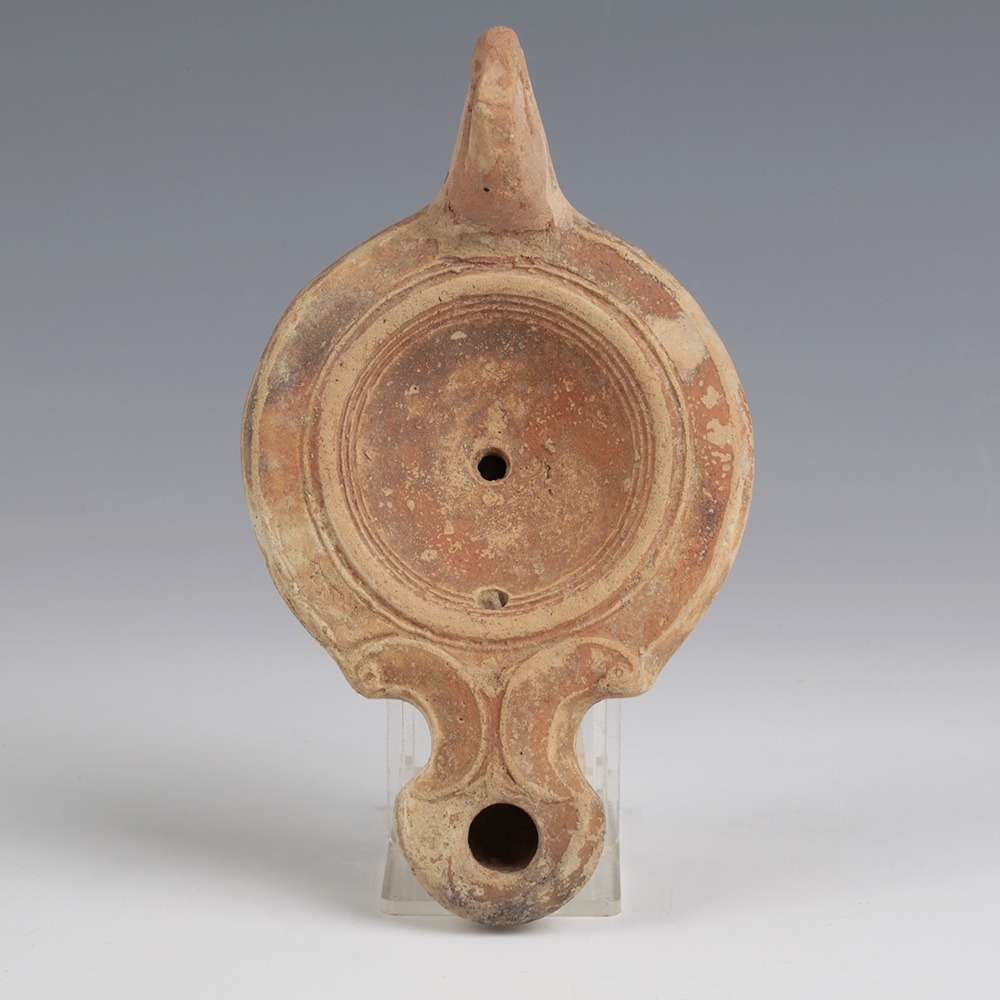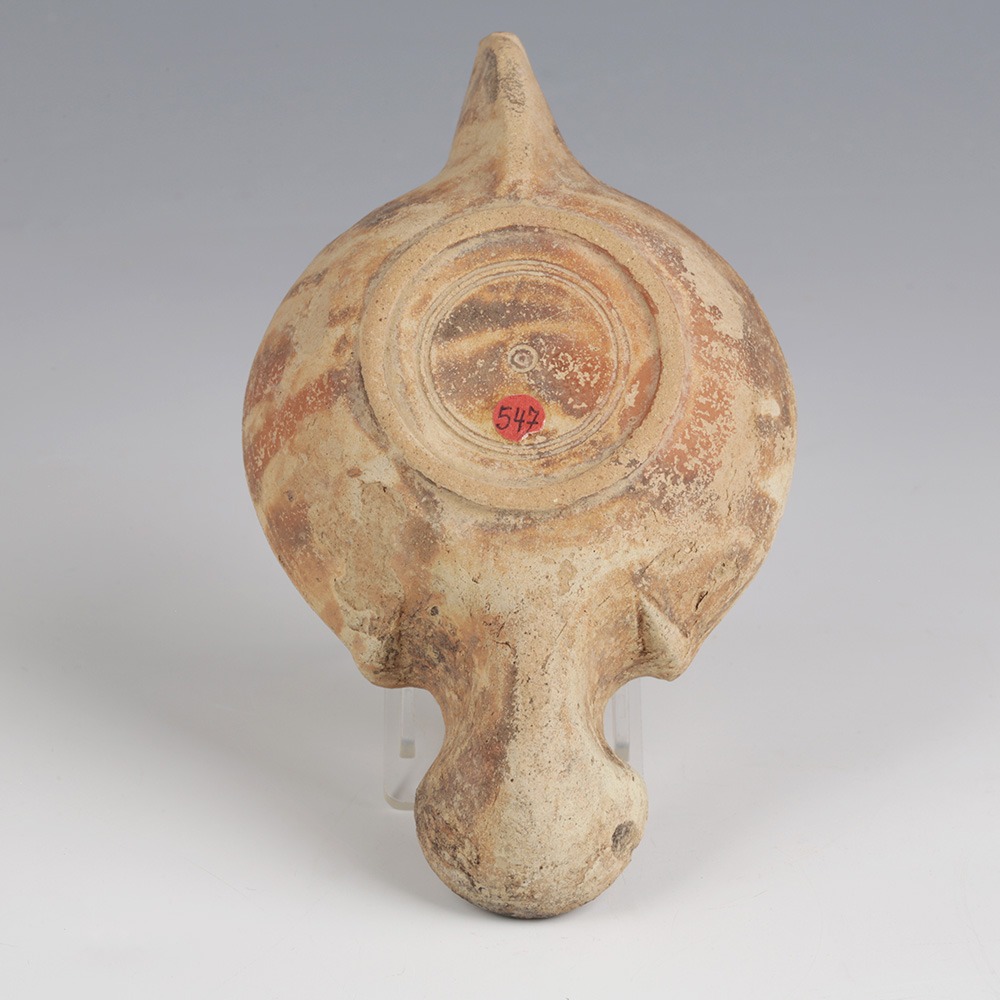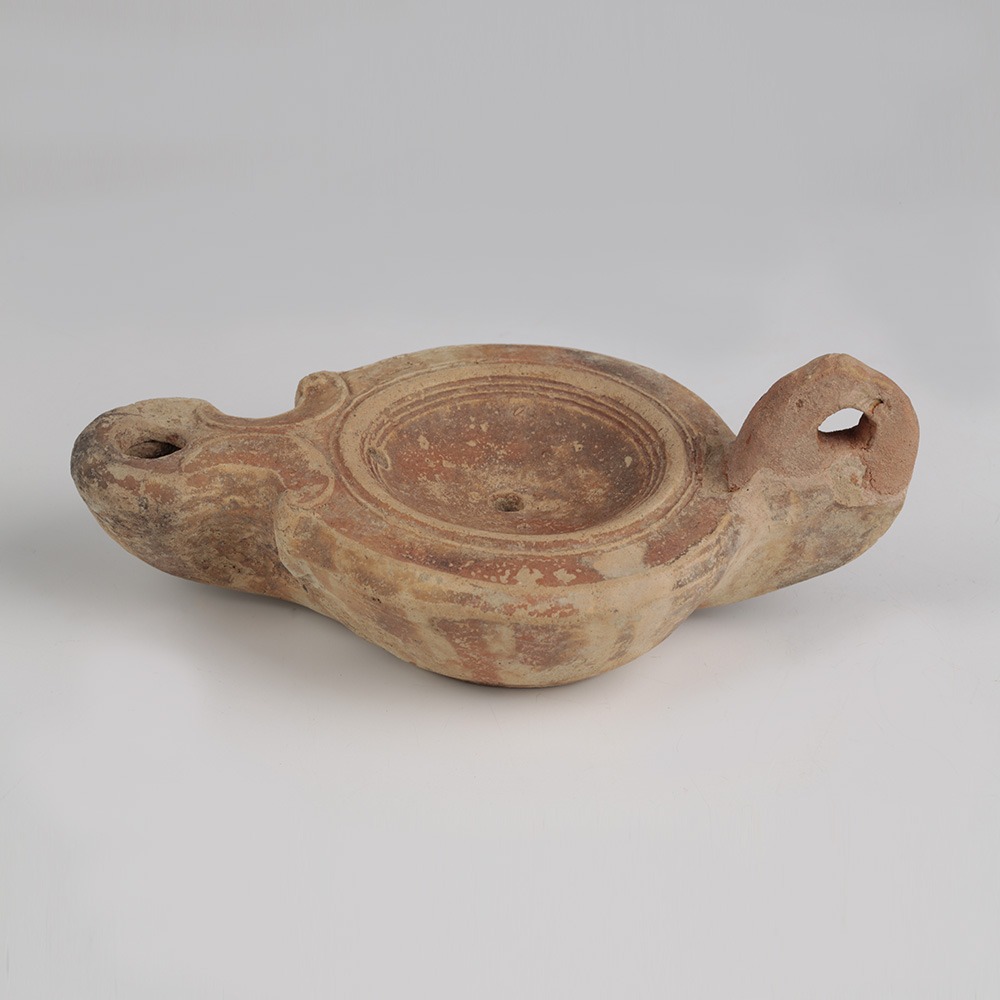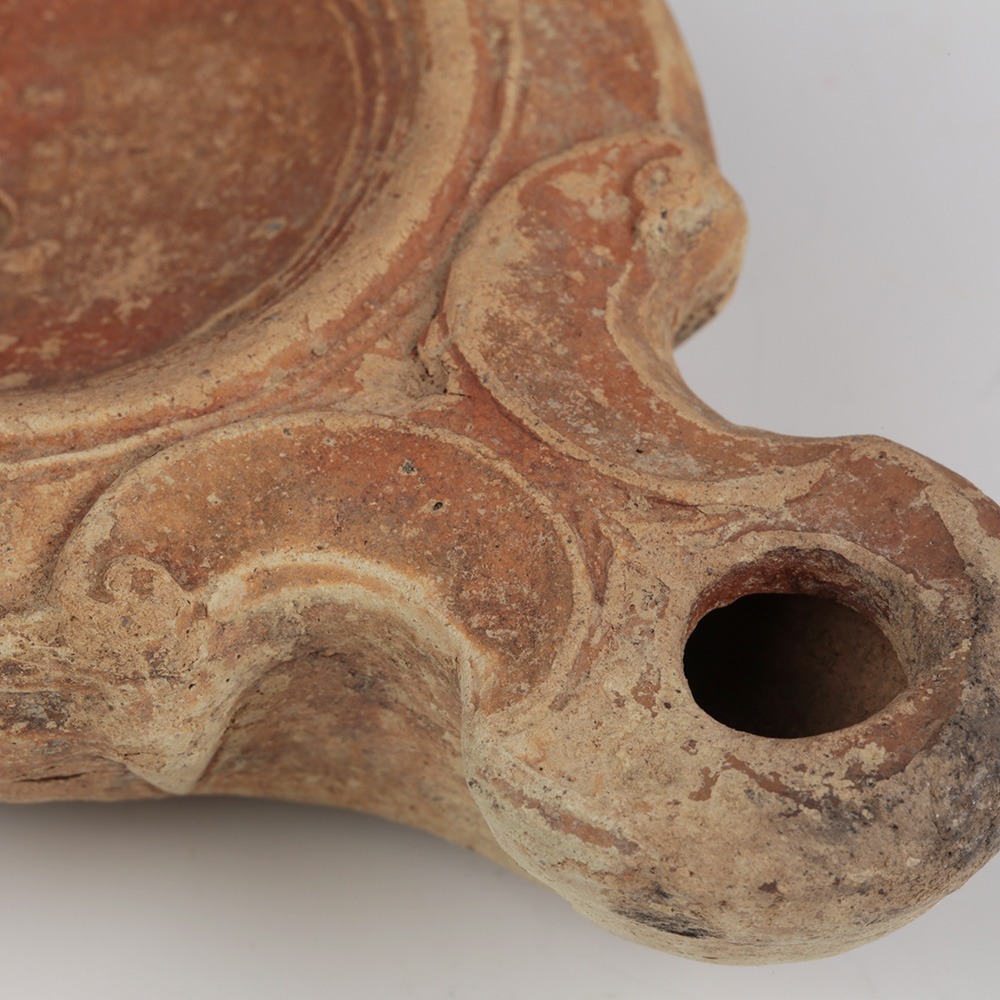At Rome, a lamp was originally called a ‘lychnus‘, from the Greek ‘λυχνος’, with the oldest Roman lamps dating back to the third century BC. It is thought that the Romans took the idea for lamps from the Greek colonies of Southern Italy. During the Roman Empire, it became commonplace to use lamps in funeral ceremonies and for public purposes. Over time, the manufacture of lamps increased, and so did the variation in decoration, which depended mainly on the shape and size of the lamp. Common decorative themes depicted on the discus were entertainment scenes (such as gladiators in combat), common myths, and animals. Pottery oil lamps could be made in three different ways: handmade, wheel made, or by mould. The use of the mould (which was made from clay or plaster) quickly became popular, because one mould could produce several lamps.
Provenanced Roman Oil Lamp
$168.09
A good-sized Ancient Roman pottery oil lamp, made of light orange terracotta. The discus is quite simple and unadorned except for a series of concentric grooves around it. Towards the front, a well-developed volute nozzle, a ring handle to rear. The lamp stands on a low ring base, decorated in the centre with a series of concentric grooves which mirror the decoration on the discus.
Provenance: From the collection of Arno Jumpertz, Leverkusen, Germany, 1924-1984. Much of the collection was exhibited at the Neus Museum, 1985.
Condition: Very fine: surface glaze worn and rubbed, with a few shallow grazes.
SOLD
| Weight | 215.6 g |
|---|---|
| Dimensions | L 15 cm |
| Culture | |
| Pottery and Porcelain | |
| Region |



